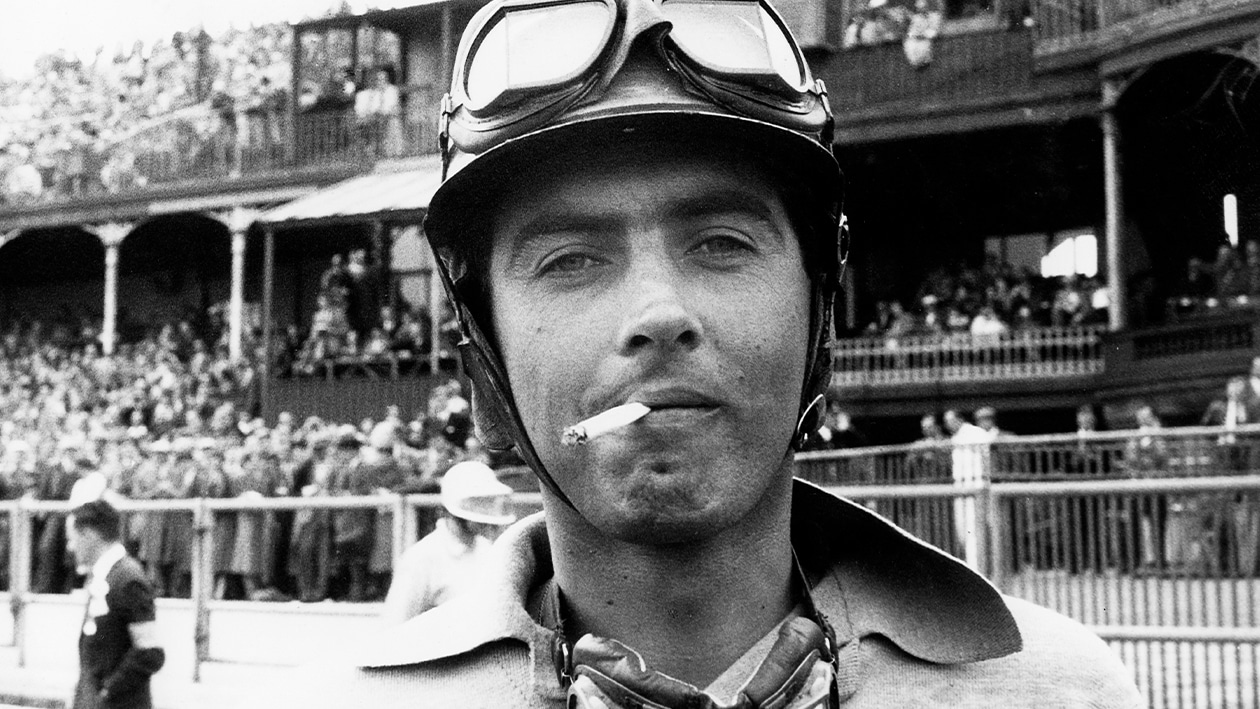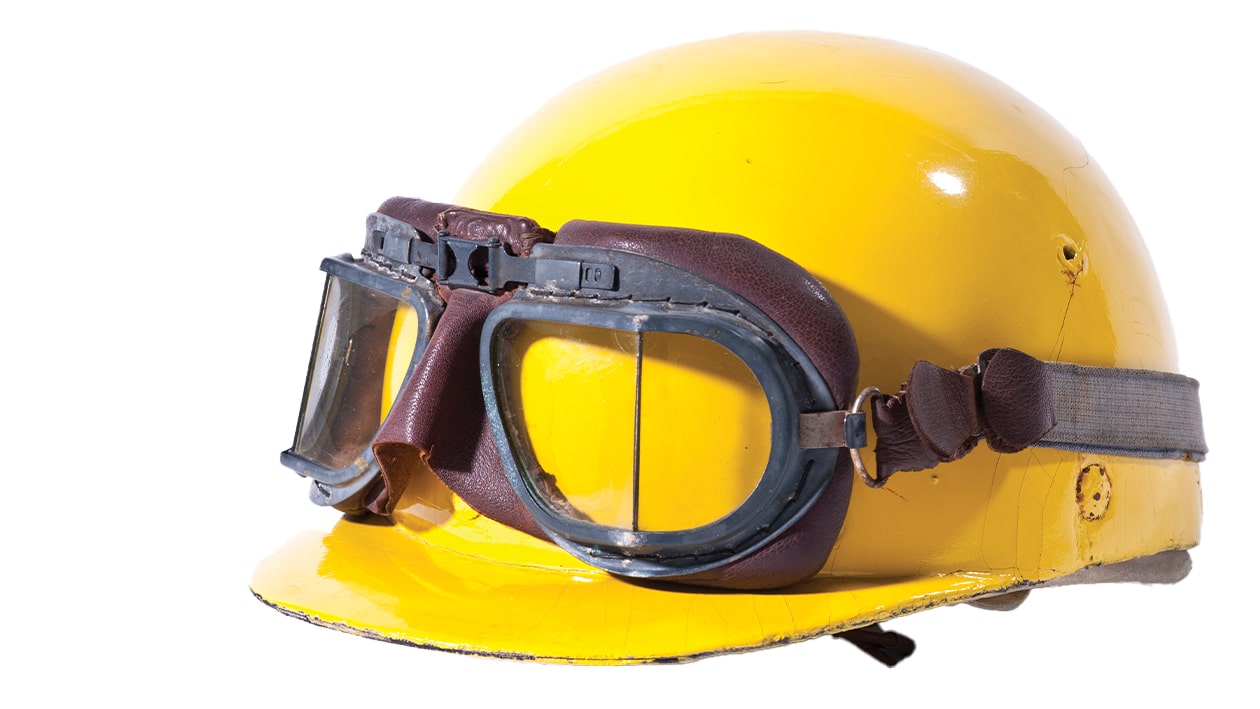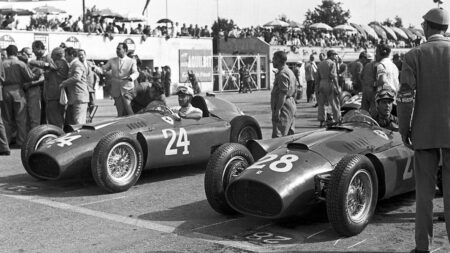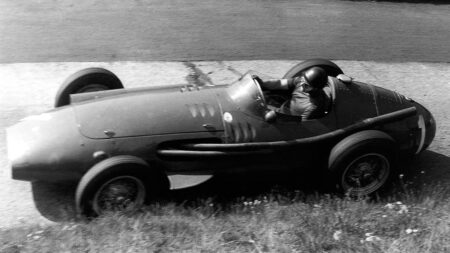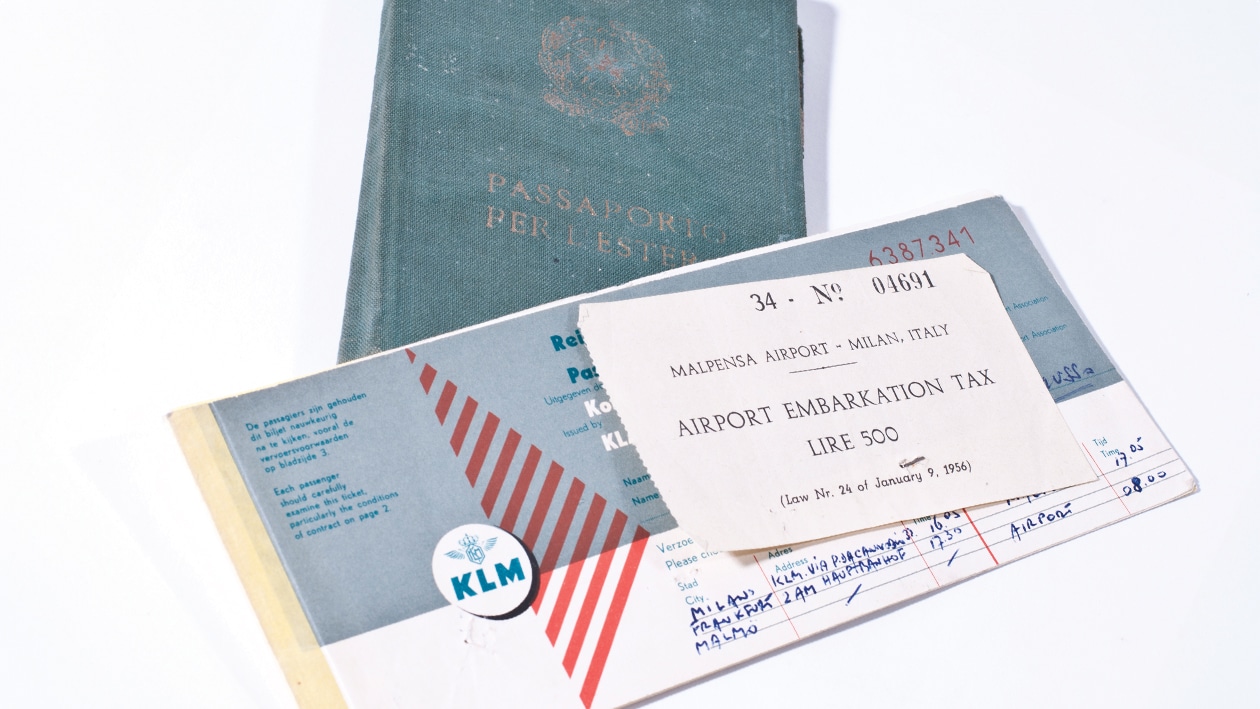Curiously, the helmet box – which also contains a pair of Musso’s goggles and gloves – bears Peter Collins’s name and address; interesting, given the Italian’s far from perfect relationship with Collins and his fellow Ferrari team-mate Mike Hawthorn. According to Musso’s girlfriend Fiamma Breschi, for whom the Italian had left his wife and two children, Hawthorn and Collins shared each other’s winnings – a privilege that they didn’t extend to Musso.
It’s within the realms of possibility that Musso borrowed Collins’s helmet box, but the items might have been united much later. It’s also feasible that Musso had his Herbert Johnson delivered to Collins, rather than risking Italy’s postal service. Such things can be more interesting when there is no definitive answer.
Medals

Musso enjoyed his most successful F1 campaign in 1957, with two second places, a fourth and a fifth, plus victory in the non-championship race at Reims and more second places in the Syracuse and Modena GPs. Luigi couldn’t match Fangio or Moss, but he did finish third in the championship. The medals here were awarded for being the highest placed Italian driver in the F1 World Championship or, as the Commissione Sportiva Automobilistica Italiana put it, the ‘Absolute Italian Champion’ (bottom). The others (top) were presented by Enzo Ferrari, in recognition of Musso’s role as a Ferrari driver during the 1956 and ’57 seasons.
It’s not the calibre of the names in Musso’s telephone book that first strikes you, but its size. Calling it a ‘book’ is perhaps a little misleading, for it is no more than two inches by three.
Telephone book
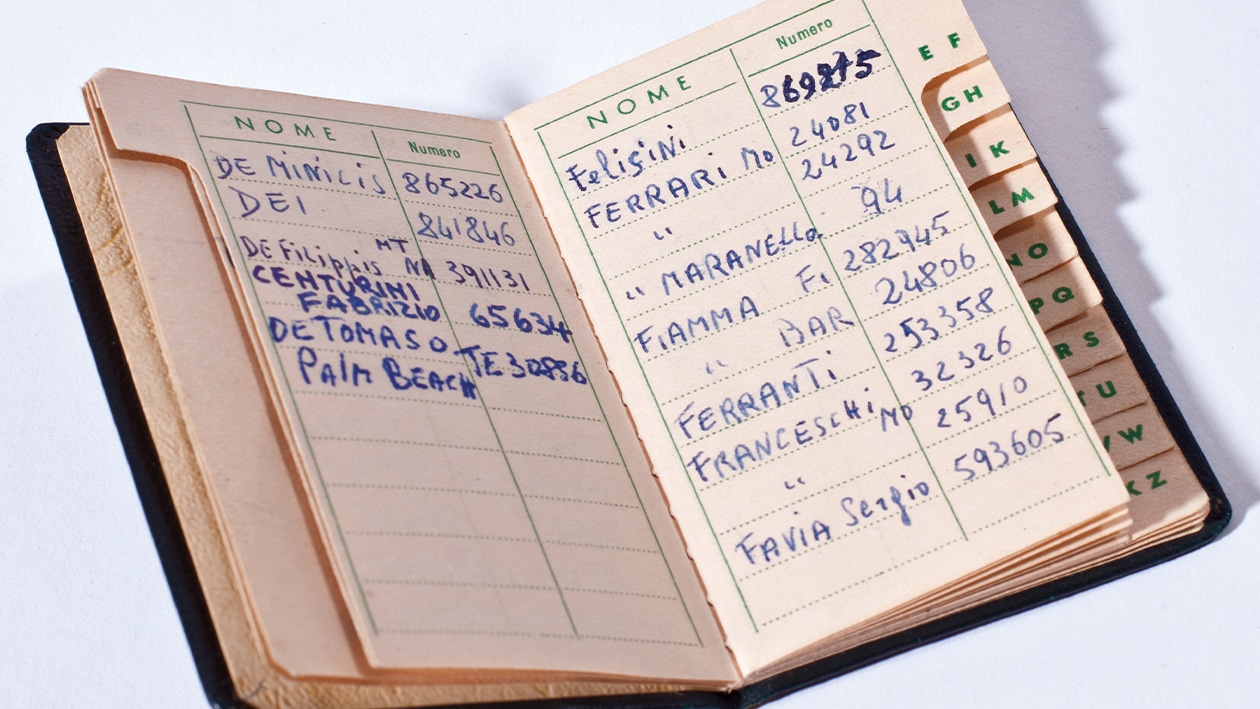
Hidden among the pages are names such as Piero Taruffi, Enzo Ferrari – for whom there are two Modena numbers, plus one for Maranello – Alejandro de Tomaso and Maurice Trintignant. Hawthorn and Collins are conspicuous by their absence.
Invitation to the 1958 French Grand Prix
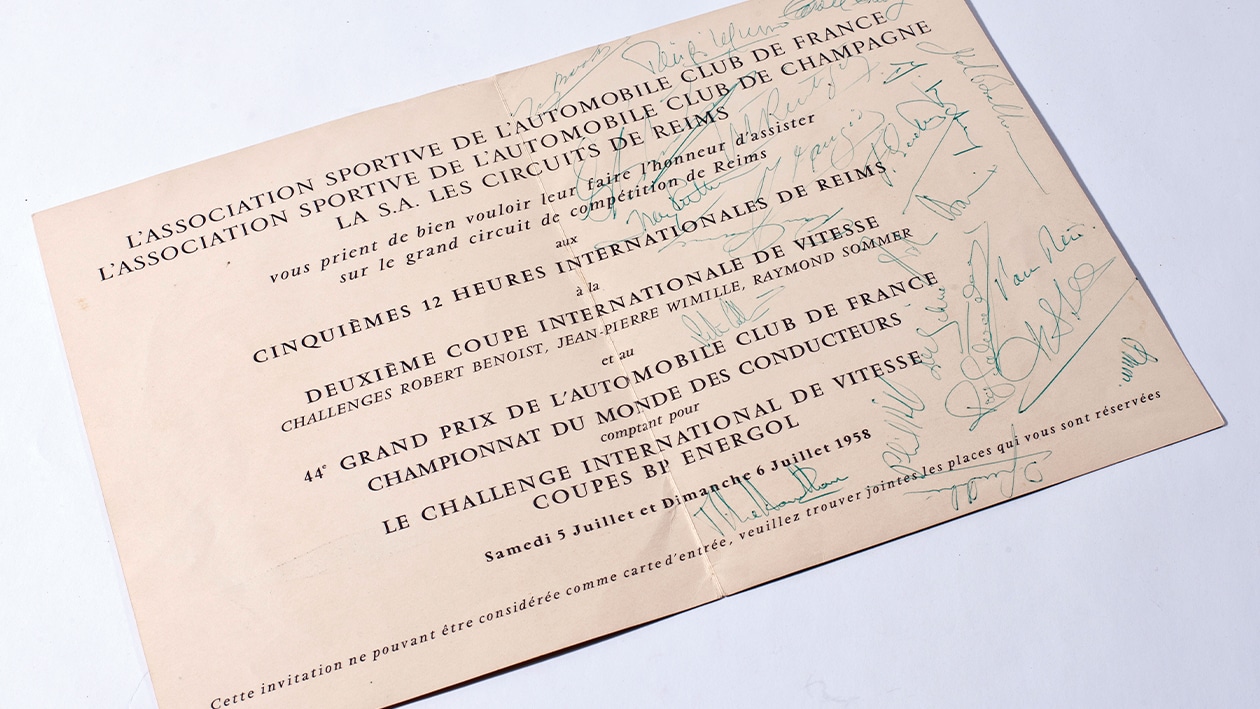
Luigi Musso lost his life in an accident during the 1958 French Grand Prix, which was also Juan Manuel Fangio’s final World Championship race. Here the signatures of Hawthorn, Carroll Shelby, Phil Hill, Collins, Fangio and many more adorn an invitation issued ahead of that weekend. It was to be one of the last additions to Musso’s personal effects. Here are a few words about Musso from our late continental correspondent, Denis Jenkinson: “The last two months have been sad ones for Grand Prix racing,” he wrote in 1958, “for first Luigi Musso is killed and then Peter Collins, while earlier in the year Archie Scott Brown lost his life.
